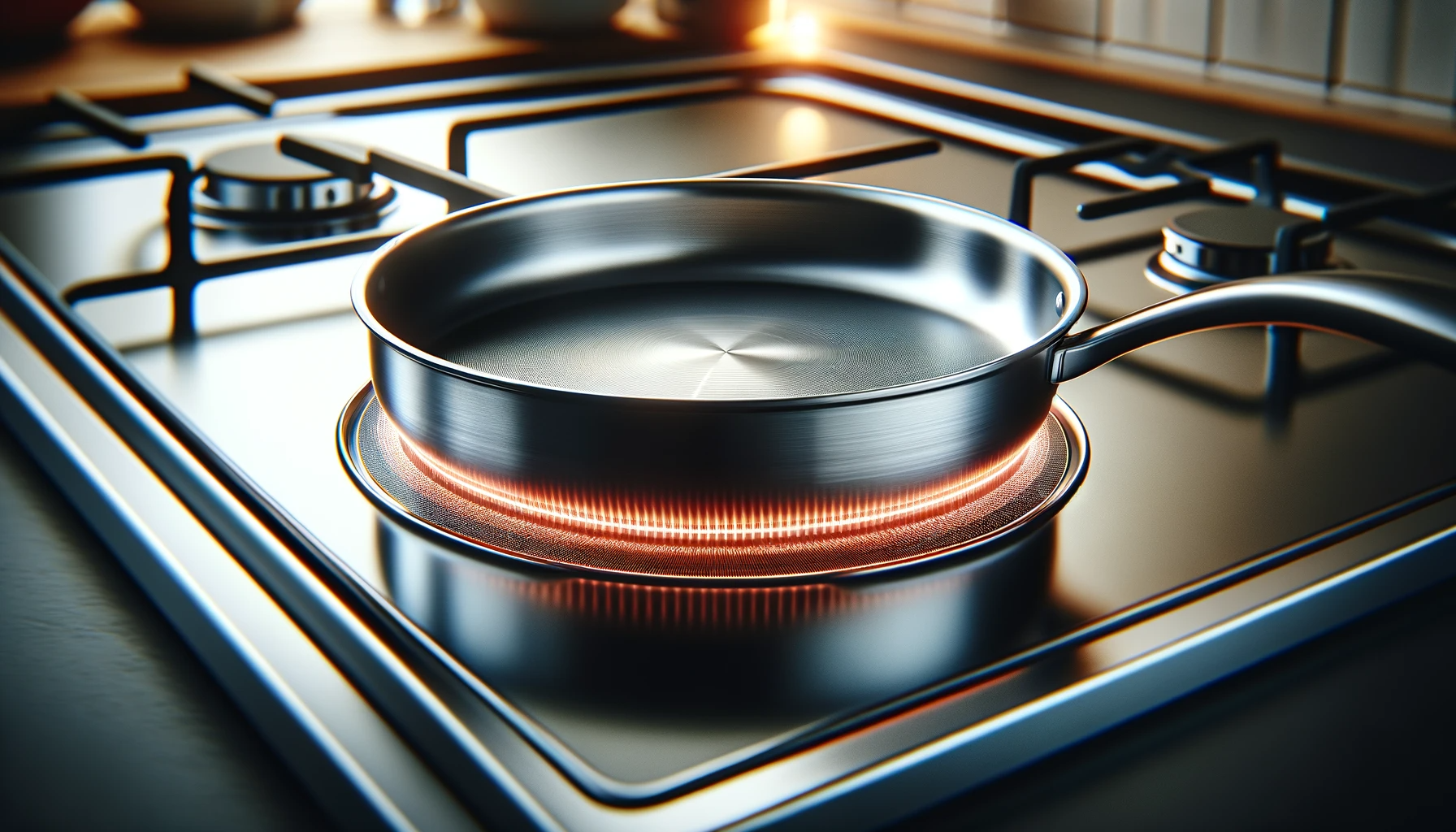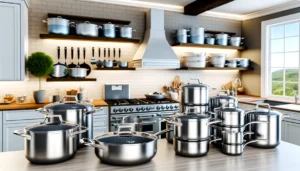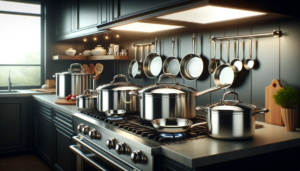Have you ever wondered if those shiny new stainless steel pots and pans are actually functional on your electric stove?
Stainless steel cookware is widely compatible with electric ranges despite some conductivity disadvantages compared to other metals that can be compensated for through proper usage techniques.
Let’s examine why stainless steel pans work on electric stoves and how to use them effectively.
Can I Use Stainless Steel Cookware on an Electric Stove?
Yes, you can use stainless steel cookware on an electric stove.
Stainless steel pots and pans are widely compatible with electric coil ranges because stainless steel is able to conduct heat adequately from the heating elements to the cookware surface.
While stainless steel does not conduct heat as swiftly or evenly as other metals like copper and aluminum, its good durability, corrosion resistance, nonreactivity, ease of maintenance and thermal responsiveness still make it a suitable cookware material for electric ranges under standard home cooking conditions.
As we explore in greater depth below, following certain usage tips and selecting stainless cookware with heat transmission enhancements facilitates effectiveness.
Is Stainless Steel Cookware Compatible with Electric Stoves?
Stainless steel is typically compatible for use on electric stoves.
Stainless steel is made from steel containing chromium and nickel, sometimes mixed with carbon.
The addition of these elements makes stainless steel cookware durable, resistant to stains and rust, and able to conduct heat relatively well.
The chromium in the stainless steel reacts with oxygen on the cookware surface to form a protective clear passivation layer over the steel under normal environmental conditions.
This invisible chromium-oxide layer resists corrosion while allowing heat to penetrate through to the steel below to achieve heating.
Most stainless steel cookware available today, especially sets marketed for household kitchen use, will indicate in the product details or description that it is safe for all cooktops, including electric.
This is because stainless steel has good thermal conductivity properties, allowing it to effectively conduct heat from the electric coils or heating elements in an electric range or stove.
While not at the level of metals like copper or silver, stainless steel still falls within the category of materials capable of relatively efficient heat transfer compared to glass, plastic, or stone.
This makes it suitable and effective for cooking usages demanding responsive temperature changes and distribution across cookware surfaces directly interacting with stove heating elements.
Provided the stainless steel pan or pot has been appropriately designed and manufactured to lie flush and make consistent contact with an electric stove’s circular heating coils, it should adequately heat up under standard home cooking heat levels and settings.
Of course, the thickness of the steel, inclusion of core conductive layers, and exact steel alloy composition impact individual performance.
But for most general cooking purposes using average-to-good quality stainless steel cookware, electric stovetops present no issue or hindrance to effectively cook foods with evenly-distributed heat exposure.
Benefits Of Using Stainless Steel Pots And Pans
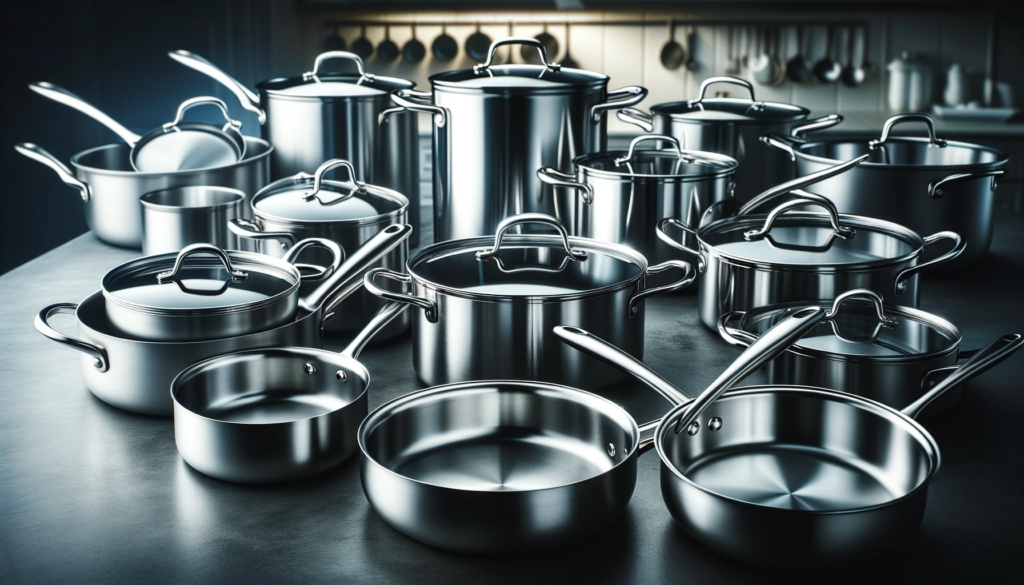
Stainless steel cookware is valued in the kitchen for several beneficial properties beyond being suitable for electric ranges.
Stainless steel is durable and long-lasting, so a good set of pots and pans can potentially last for many years with proper care and maintenance without warping or wearing down from repeated heating and cooling cycles.
Many consumers can use a single stainless steel cookware set for the majority of their adult cooking life with such resilience.
The stainless steel material also resists corrosion through the previously described passive chromium oxidation layer that protects the base steel underneath.
This means stainless steel pots and pans stay free from rust and do not require specialized storage conditions when not in use to maintain their integrity and appearance over long periods.
A little surface discoloration or mineral deposit buildup from water and foods may occur, but does not penetrate or weaken the essential steel structure absent any deep abrasions or scratches incurred by mistreatment.
Additionally, stainless steel is nonreactive, so it generally does not react with or affect the taste of foods being cooked the way some other cookware materials potentially can.
Acidic tomato sauce, buttery dishes, eggy custards, wine-based sauces and more all safely cook without threat of material interactions leeching flavors or altering intended tastes.
This makes stainless steel ideal for cooking a wide variety of savory dishes.
Professional commercial kitchens rely on large stainless steel vessels for similar nonreactive traits.
There is also a very wide variety and range of stainless steel cookware available on the consumer market, at price points ranging from budget-friendly to premium brands.
Many sets also include upgrades like aluminum or copper cores sandwiched between layers of stainless steel along pan bottoms to further improve heat conductivity from stove heating elements to pan cooking surfaces.
The variety allows home cooks to select stainless steel cookware tailored to their cooking needs and budget constraints.
Stainless steel pots and pans are generally easy to clean by hand or in the dishwasher and resistant to warping from heat exposure over time, maintaining smooth, flat and flush surfaces for best functionality.
These beneficial properties combine to make stainless steel a versatile and valuable cookware material for most home kitchens.
It offers an ideal balance of durability, longevity, low reactivity, low maintenance, and thermal responsiveness coveted by home cooks.
Tips For Cooking With Stainless Steel On An Electric Stove
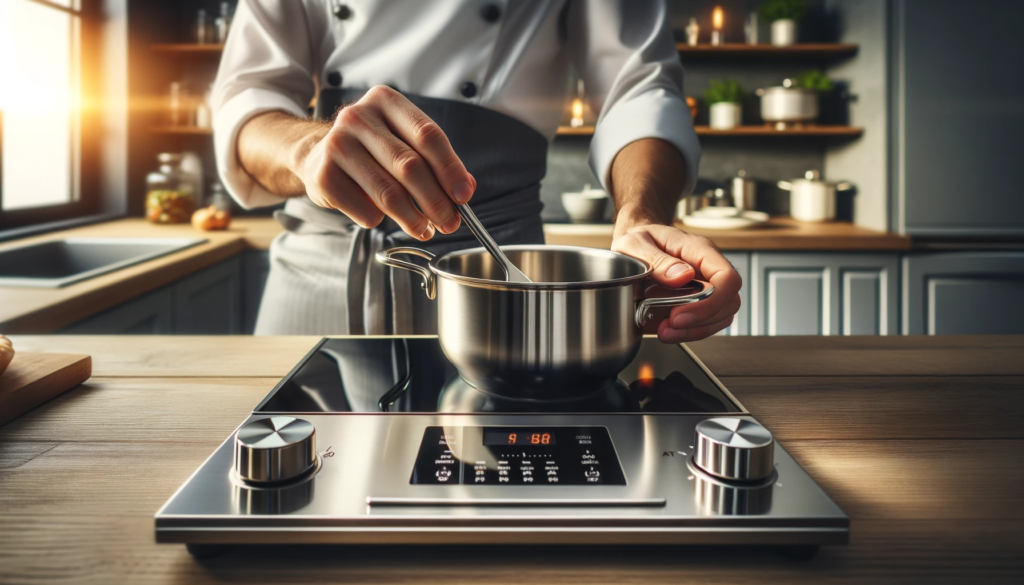
While stainless steel works well on electric stove tops, there are some tips to follow to get the best possible cooking results when using it.
Here are key things to keep in mind:
Ensure stainless steel cookware makes solid, consistent contact with the electric coil heating elements on the stove when in use.
The pan bottom should lie as flat as possible along the full surface of the electric coil without gaps that can lead to uneven heating.
Cooks will want to inspect stainless steel pans for flatness before purchasing by holding them level to observe any rocking motion that indicates curve or warp.
While cooking, avoid situations where pots or pans wobble in place or only partially cover an electric burner while in use.
Consistent contact equals better conductivity.
Allow some extra preheating time for stainless steel cookware to heat thoroughly and evenly on an electric stove before adding cooking ingredients.
While stainless steel conducts heat well, the good conductivity still may translate to slightly longer preheat times compared to highly responsive materials like copper or aluminum.
Watching for the first hints of vapor wisping from oil heating in the pan can signal an adequately preheated pan before adding ingredients like protein or vegetables intended to sear or sauté.
Letting extra heat build in the empty cookware helps compensate for stainless steel’s otherwise slower response time.
Use lower-to-medium heat settings on an electric range when cooking with stainless steel pots, pans or other vessels rather than immediately turning the burner to its highest heat.
This helps prevent the formation of extremely hot spots on the cookware surface during preheating that can ultimately lead to burning or uneven cooking results once ingredients are added.
More moderate heat allows for gradual, even buildup and distribution of heat energy across the entire pan surface contacting the electric element.
Consider choosing stainless steel cookware that has encapsulated or bonded bottom layers if cooking frequently on an electric range.
Quality cookware brands design pots and pans specifically for electric stoves with optimal heat transmission from coils to cookware surface in mind.
They sandwich thin layers of more conductive metals like copper or aluminum between stainless steel to address stainless steel’s naturally uneven heat distribution tendencies.
The other metals compensate for this shortcoming.
Use cooking oils, butter or other fats and greases when cooking many foods in stainless steel pans on an electric stove even if a non-stick surface.
While durable, stainless steel tends to have a slicker surface than something like cast iron.
A thin layer of oil helps evenly transmit ambient heat from the preheated pan surface directly to food for consistent heating and browning as well as preventing sticking or burning on.
But only apply surface fat after cookware reaches desired temperature.
Promptly clean any cooked-on residue stuck to stainless steel cookware used on an electric range soon after cooking for optimal maintenance.
While stainless steel resists corrosion, remnants from acidic ingredients can still degrade surface appearance and responsiveness over time with repeated exposure if not removed through cleaning.
The goal is maintaining an ultra smooth, flush cookware surface for seamless contact with a stove heating element.
Potential Downsides To Consider
While stainless steel can make excellent cookware for an electric stove top, some potential downsides are worth keeping in mind as well before investing in stainless steel pots and pans:
Stainless steel may develop localized hot spots on electric ranges if the cookware bottom is not perfectly flat or fails to correctly contact any portion of the heating elements.
Any pan warp or inconsistencies in the surface that lift all or part of the base away from the burner risks uneven heating by preventing heat conductivity over sections not touching.
This usually only applies to lower-quality stainless steel cookware prone to imperfections or warping.
Stainless steel does not necessarily provide the absolute best responsive heat distribution on its own compared to options that integrate better conductive metals like copper or aluminum.
Cooks may need to implement active stir-frying or tossing techniques more frequently when sautéing foods to compensate for more moderate ambient heat diffusion tendencies.
Adding stir-fry ingredients in batches helps prevent overcrowding, which further hampers heat transfer to ingredients not directly contacting pan surface.
Stainless steel cookware is not always considered the ideal choice for cooking egg dishes or other delicate foods sensitive to variations in heating consistency and texture changes over relatively small temperature fluctuations compared to heartier dishes less affected.
The slick surface can initially cause proteins like eggs to stick if not properly preheated.
And the potential for hot spots forming while preheating empty stainless steel pans followed by ingredient additions makes it tricky to sufficiently heat the pan surface for optimal egg cooking without overcooking some areas.
Compared to some other popular cookware materials, stainless steel generally takes substantially longer to heat up when placed on electric stove heating coils before reaching optimal cooking temperatures.
That calls for more patience when waiting for the metal to come up to temperature—a smaller downside that attentive cooks willing to preheat sufficiently can work around with proper planning.
Conclusion
In conclusion, stainless steel cookware is generally compatible and safe for cooking on electric stove tops.
While stainless steel conducts heat reasonably well, integrative designs with aluminum or copper cores improve heat responsiveness.
Allowing extra preheating time, using moderate heat settings, and cooking with oils/fats assists with efficiency.
Minor drawbacks exist like potential uneven heating and slower general heat conduction compared to other metals.
But these can be mitigated through proper cookware selection and cooking techniques.
Overall, the durability, corrosion resistance and versatile utility stainless steel pots and pans provide make them well suited for electric ranges in home kitchens.
